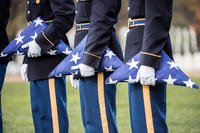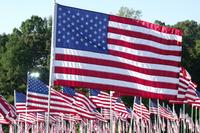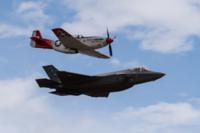The American flag goes by many names — Old Glory, the Star-Spangled Banner, the Stars and Stripes — but no matter what you call it, it represents the core ideals of the U.S. Constitution and remains one of the most recognized symbols in the world.
Yet behind its familiar design lies a rich history and a set of laws, customs, and courtesies that many Americans don’t fully know. Curious about what the flag really stands for and how it came to be? Let's take a closer look.
1. The original American flag didn’t have to look like it did
The original flag resolution only called for 13 red and white stripes along with 13 white stars on a blue field. There was no resolution for how the stars should be displayed, only that they represented a “new constellation.”
As a result, the original 13-star flag had a number of variations, including non-stars in the field of blue (along with the stars, of course).
2. There have been 27 American flag designs
Though still popularly called the “Betsy Ross” design, the 13 stars in a circle on the field of blue was likely not designed by Betsy Ross -- but the design was the choice of the flagmaker. After Kentucky and Vermont were admitted to the Union, two more stars were added to the flag, along with two stripes.
Congress later pulled back the number of stripes and set it at 13 (imagine a flag with 50 stripes!). Stars were added as states were added to the Union, and new flags go into effect every July 4th after the new states are admitted to the Union. The U.S. has flown 27 different official versions. The last two iterations, the 48- and 50-star versions, have been in use the longest.
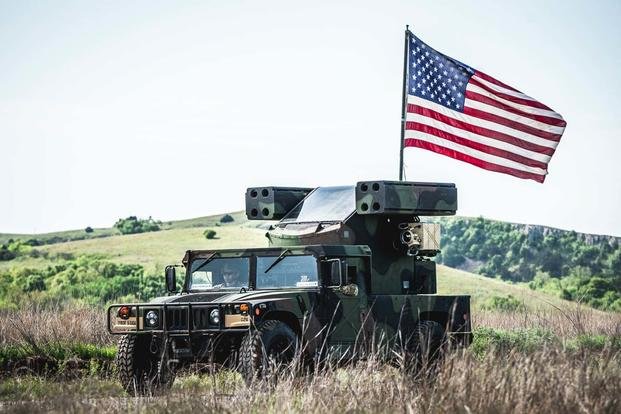
3. Salute the American flag during the Pledge of Allegiance
According to the U.S. Flag Code, 4 U.S. Code § 4, Persons in uniform “should remain silent, face the flag and render the military salute. Members of the armed forces not in uniform and veterans may render the military salute in the manner provided for persons in uniform.”
4. There are actually a lot of times to salute the American flag
According to 4 U.S. Code § 9, the armed forces or veterans of the armed force should render salutes during the ceremony of hoisting or lowering the flag or when the flag is passing in a parade or in review.
5. There’s a process for flying the American flag at half-staff
Lowering the flag is done for a ceremonial occasion, such as Memorial Day, or by order of the President of the United States or a state governor. When the flag is flown at half-staff, it should be first raised to the peak of the pole for an instant before being lowered.
6. American flag pins are worn on the left lapel
The rules for men’s fashion will tell you that a lapel pin goes on either label, where the buttonhole would be. Wearing an American flag lapel pin, however, has a different rule. Considered a replica of the original flag, it is always worn on the left lapel, near the heart.
7. The American flag can be used to call for help
Enshrined in American flag code, the union -- the blue area featuring a field of stars -- should always be displayed up. Flying the flag with the union down is a signal of distress “in instances of extreme danger to life or property.”
8. Is it illegal to wear the American flag?
Because of the way the U.S. code is written, using the word “should,” it is not actually illegal to use the flag as clothing -- just against standards.
So what are the rules? There are a lot of taboos associated with the American flag in 4 U.S. Code § 8, “Respect for the Flag.”
According to that code, the flag “should never be used as wearing apparel, bedding, or drapery.” It also “never have placed upon it, nor on any part of it, nor attached to it any mark, insignia, letter, word, figure, design, picture, or drawing of any nature.”
It’s also against flag code to use the flag on anything disposable, which includes patriotic paper plates and napkins. Any advertising signs should not be fastened to a staff or halyard from which the flag is flown.

9. There are special American flag rules for Memorial Day
On Memorial Day, the flag should be displayed at half-staff until noon only, then raised to the top of the staff in the afternoon. Enshrined into law by the soldier-in-chief himself, Dwight D. Eisenhower, it honors the losses and then the bravery of American troops.
10. The American flag can be lowered for first responders
Chief Executives get the say-so for honoring individuals in the areas they govern. Just as the president can order the flag lowered across the country, governors of individual states can order the flag lowered for individual members of the armed forces or for first responders.
11. The American flag is alive
According to the Flag Code, the American flag “represents a living country and is itself considered a living thing.”
12. Every president has seen a new American flag in their lifetime …
… so far. Every single American president was not buried under the same American flag that existed when they were born. President Barack Obama could be the first if the U.S. retains only 50 states in his lifetime. Presidents Carter, Clinton, Bush and Trump were all born before Alaska and Hawaii were admitted as states.
13. Burning the American flag is not a crime
In the 1989 Texas v. Johnson decision, the Supreme Court upheld the right of protesters to burn Old Glory as protected free speech. As a political statement, burning the American flag was protected by the First Amendment.
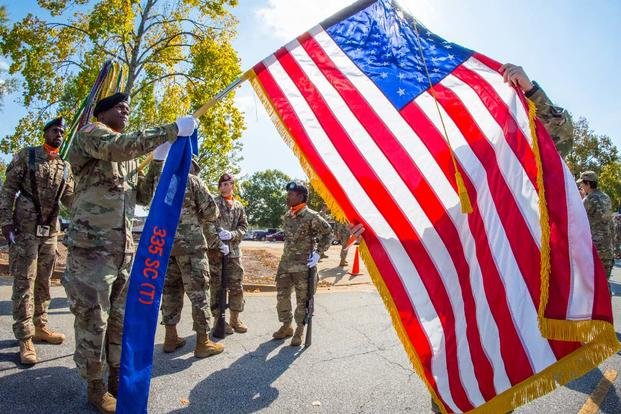
14. You have to burn the American flag… eventually
But there is a respectful way to burn an American flag, and that method is a means of retiring an old, worn out one. Specifically, according to the U.S. Flag Code, when it’s no longer a fitting emblem for display. Veterans organizations like the American Legion or Veterans of Foreign Wars will often do this for you.
15. The President can do whatever he wants with the American flag
Have you ever wondered why some flags have gold fringe on them and some don’t? Or why some Presidents have more than one flag in every room? Or have you ever just wondered what the protocol for the President and the American flag actually is? The answer is: whatever the President wants it to be. Rank has its privileges, and as Commander-in-Chief, whatever protocols he or she makes, goes.
-- Blake Stilwell can be reached at blake.stilwell@military.com. He can also be found on Twitter @blakestilwell or on Facebook.
Want to Learn More About Military Life?
Whether you're thinking of joining the military, looking for post-military careers or keeping up with military life and benefits, Military.com has you covered. Subscribe to Military.com to have military news, updates and resources delivered directly to your inbox.


